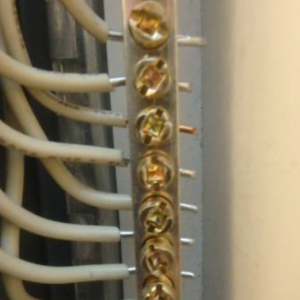The True Story Behind Aluminum Wiring – Part One
Aluminum wiring in homes has an interesting and controversial history. We’ve had lots of clients ask, “Is it safe? Should it be replaced?” The short answer is that it is safe and does not need to be replaced. However, it’s good to be aware of some special considerations.
As a home inspector, it’s important to be able to provide your clients with accurate information to help with their big decisions. The best place to start is quality home inspector training, where inspectors can start learning or brush up on the truths behind common home systems, such as the electrical system. Let’s take a look at the real story behind aluminum wiring.
Dispelling the Myths

We hear regularly that aluminum wiring has been recalled and that it is no longer approved or permitted in homes—neither of these is true. Aluminum wiring is permitted with the appropriate installation methods and materials.
Electrical wiring in homes has traditionally been copper since the introduction of electricity in homes in the late 19th century. Aluminum wiring was introduced to homes in North America in the mid-1960s. The price of copper was very high, and aluminum was a cost-effective alternative.
Not as Good as Copper
Was aluminum as good as copper? Not quite. It was recognized from the beginning that copper is a better conductor of electricity. The manufacturers and the authorities adjusted for that by using slightly larger aluminum wire to perform the same work as copper. Most branch circuit wiring in homes is 14 gauge copper. The equivalent aluminum wire is 12 gauge. Remember, though: 12 gauge is larger than 14!
The installation methods were exactly the same for aluminum as for copper.
The Issues
Shortly after aluminum wiring became popular, some problems started to appear. These included flickering lights, warm cover plates on switches and receptacles, and burned insulation on wiring. There was an overheating issue, and overheating can mean fires. They looked into it and found there were three other differences between copper and aluminum.
- Softness: Aluminum is a much softer metal than copper. Electricians who had always worked with copper found that it was very easy to nick, cut, or crush the aluminum wiring when removing insulation or making connections. They had to be gentler. Damaged wire creates local hot spots and results in overheating.
- Creeping: When electricity flows through wire, the wire heats up. Aluminum wire expands more than copper when it heats up. The repeated expansion and contraction as the wire heated up and cooled down caused to the wire to creep out from under the terminal screws that held the wire in place. This wire creeping resulted in loose connections and overheating.
- Rusting: When metals rust, they form an oxide on the surface. Rust on steel is red, rust on copper is green, and rust on aluminum is white. It’s not a big problem when copper wiring rusts, since the copper oxide that forms is electrically conductive. It doesn’t interfere with the wire’s ability to do its job. When aluminum wiring rusts, the white oxide is not a very good electrical conductor. It does interfere with the flow of electricity, and again, can cause overheating.
The Solution
The problem was at connections, such as receptacles, switches, light fixtures, appliance connections, and at the panel. The solution was special connectors.
Connectors that work well with both copper and aluminum were created. That included:
- Small receptacles marked CO/ALR or AL-CU
- Large receptacles (> 20 amps) marked AL-CU or CU-AL
- Switches marked CO/ALR
- Twist-on wire connectors (sometimes called wire nuts) marked AL-CU or CU-AL
Electrical panels and breakers marked AL-CU or CU-AL were also available.
There were other approved connection systems that have come and substantially gone.
In part two of this post, we explore a few more additional considerations, as well as questions about insurance, and what to do if you have aluminum wiring in your home.
